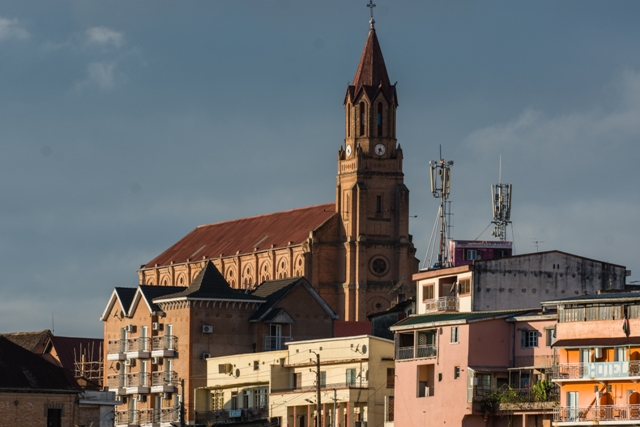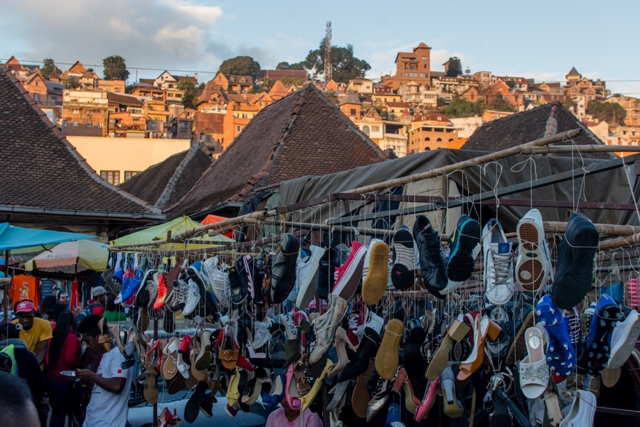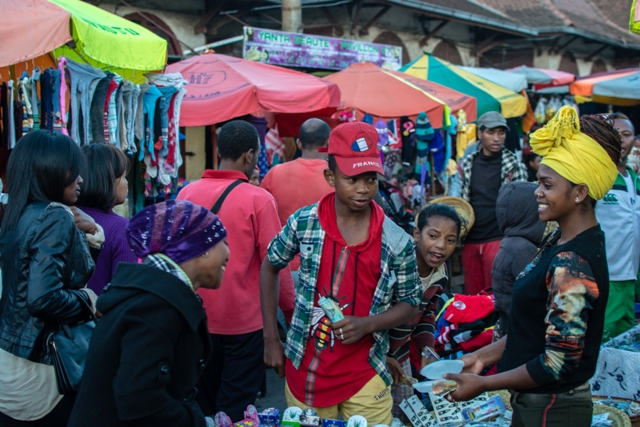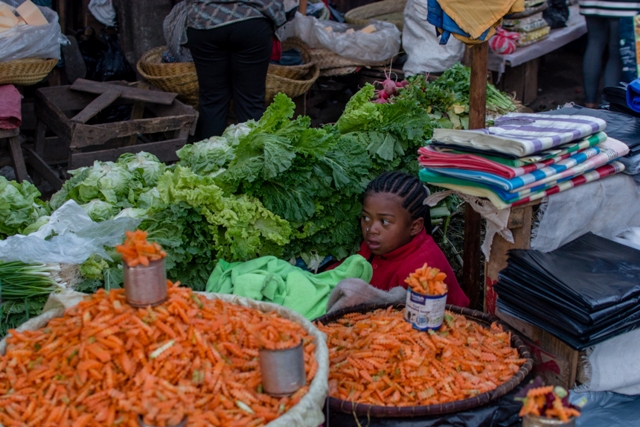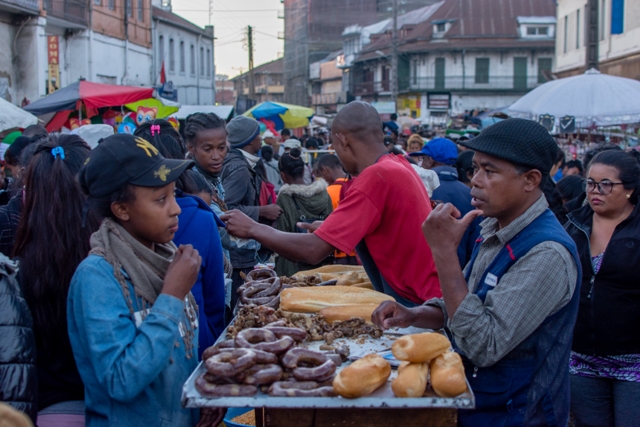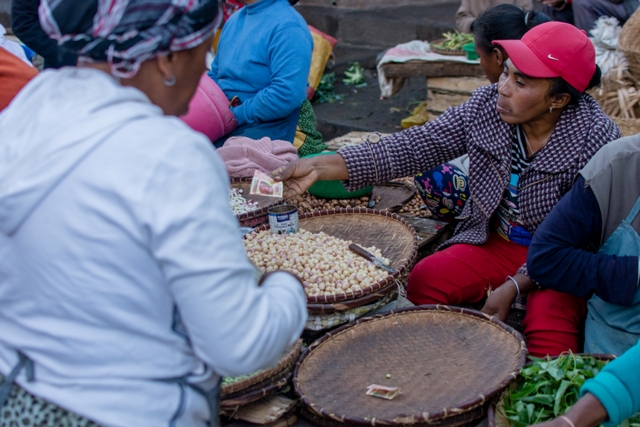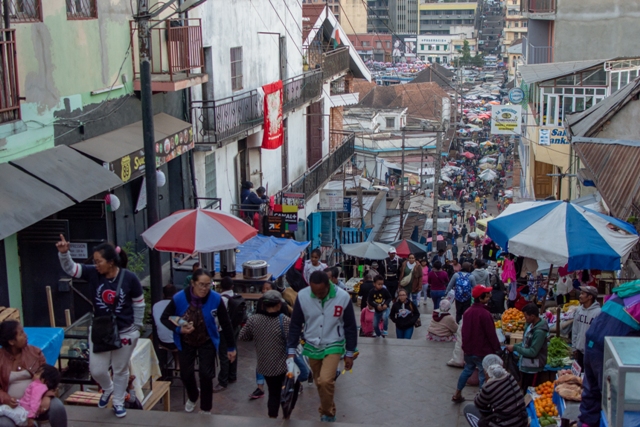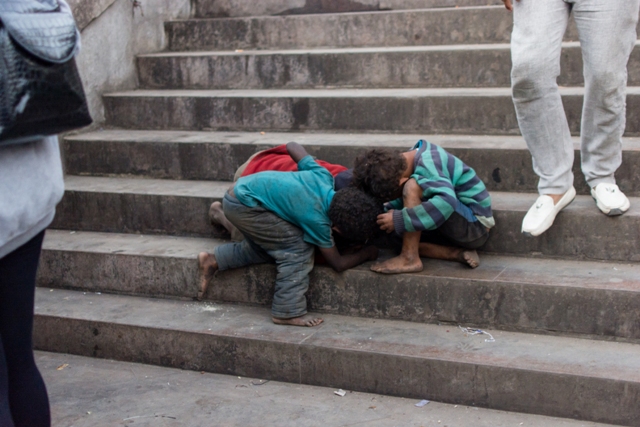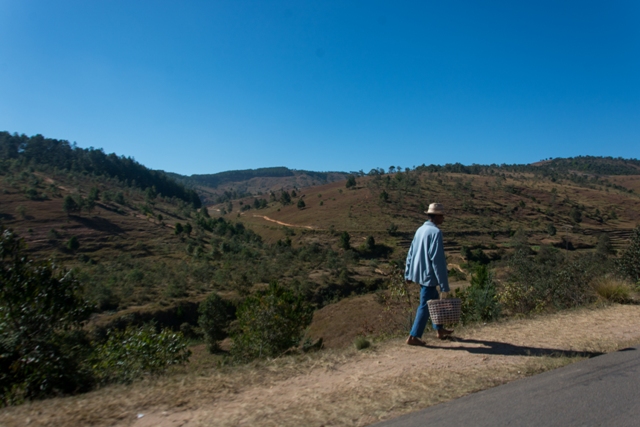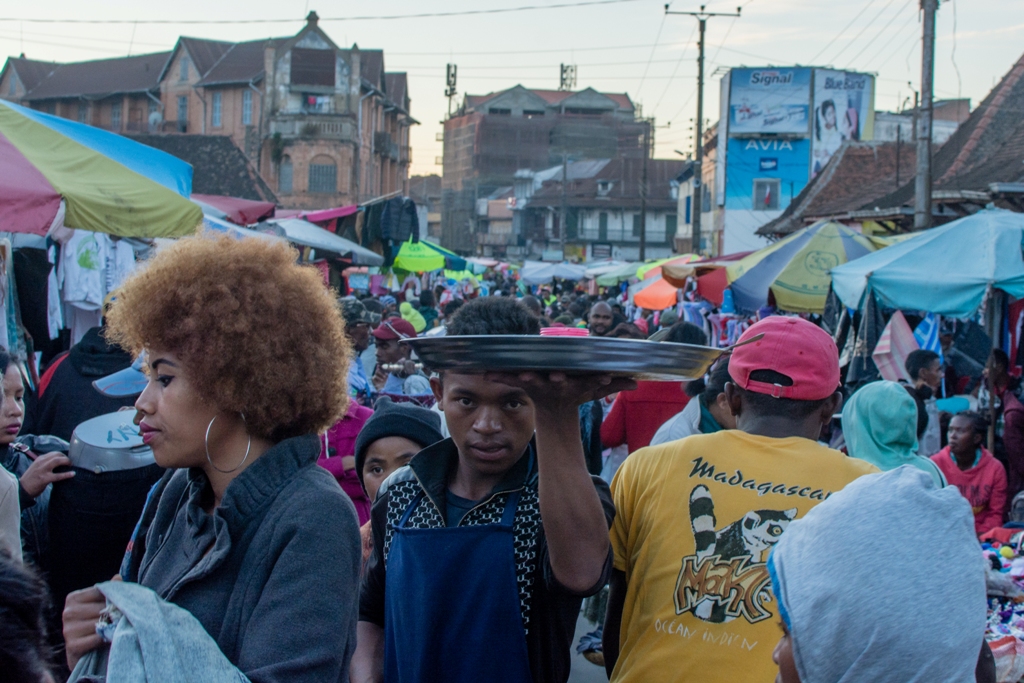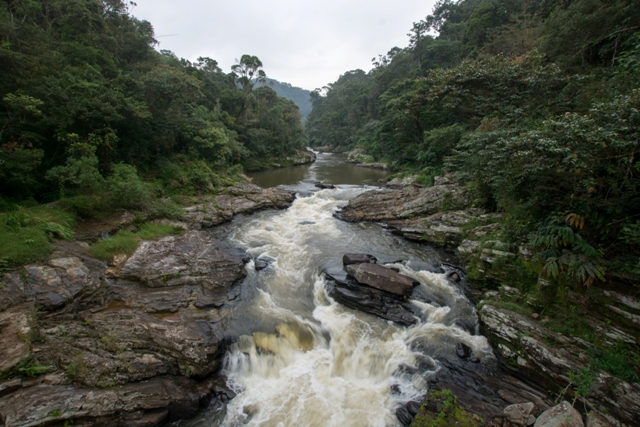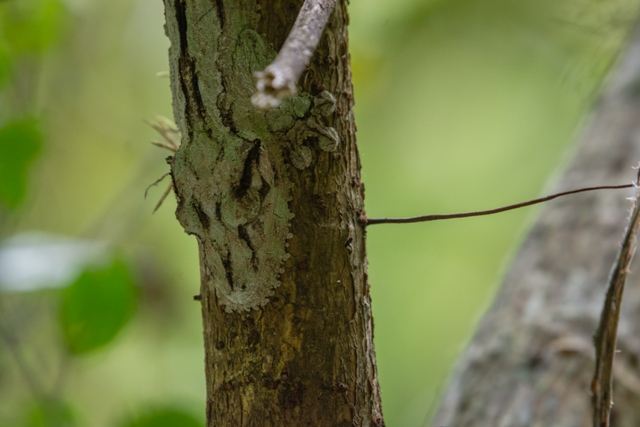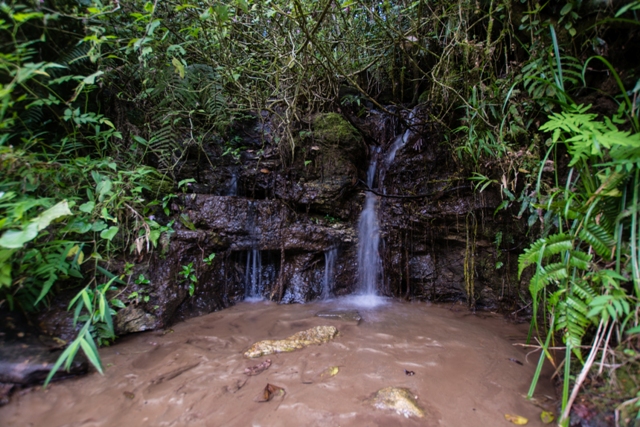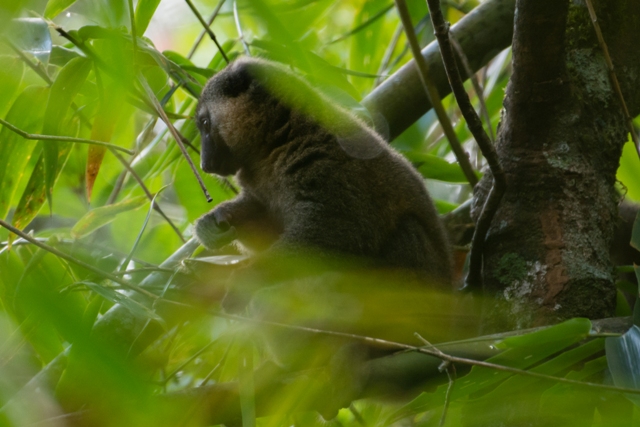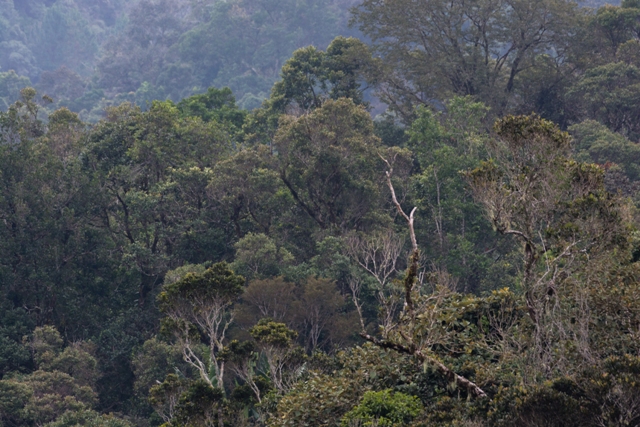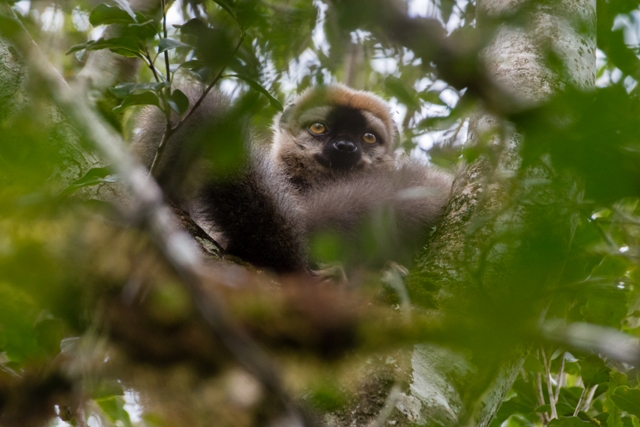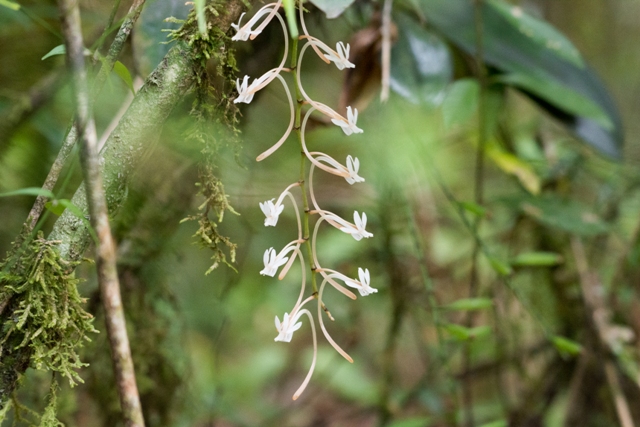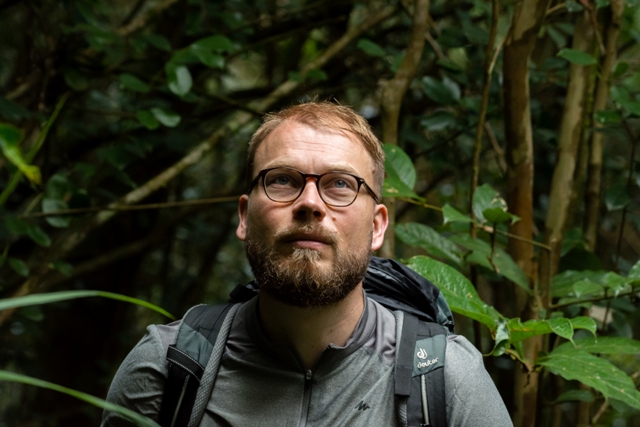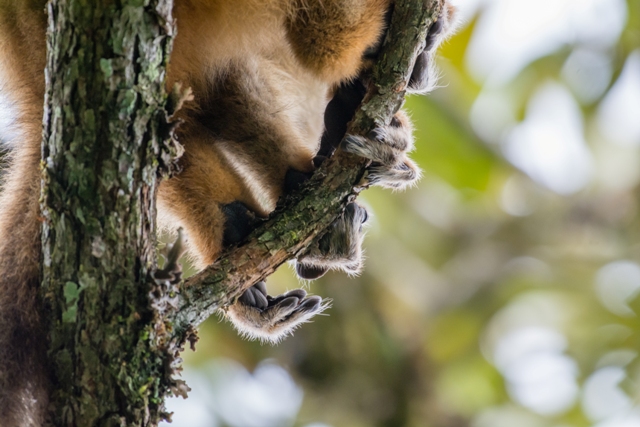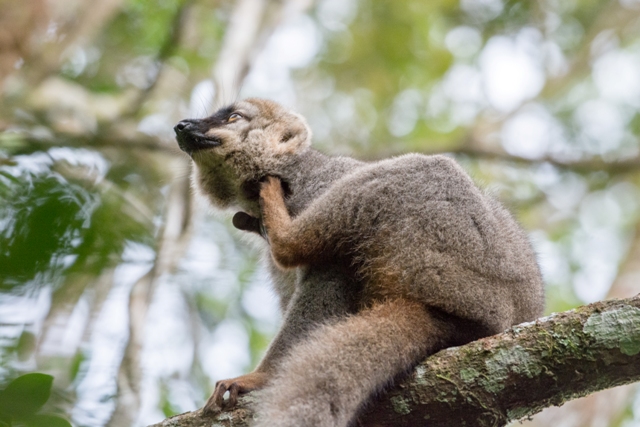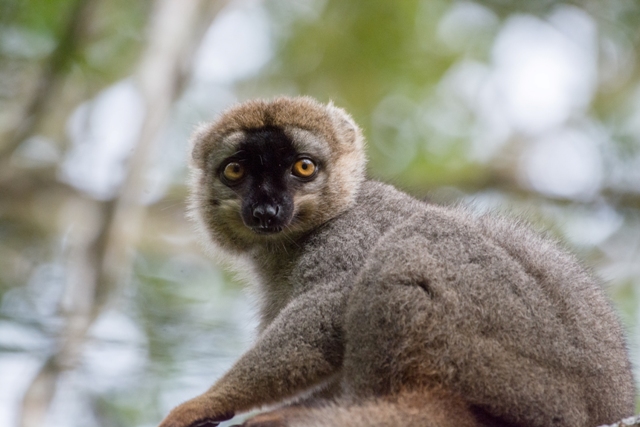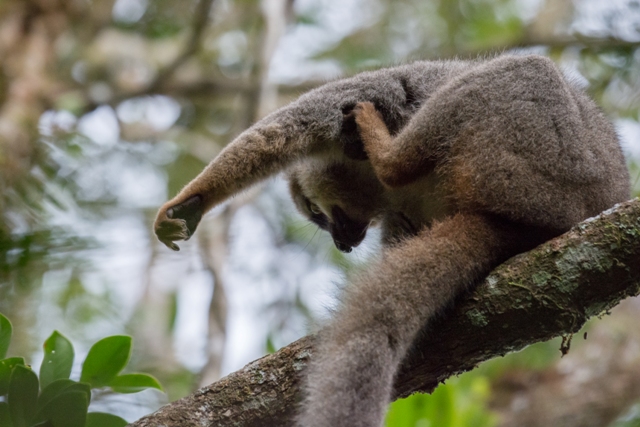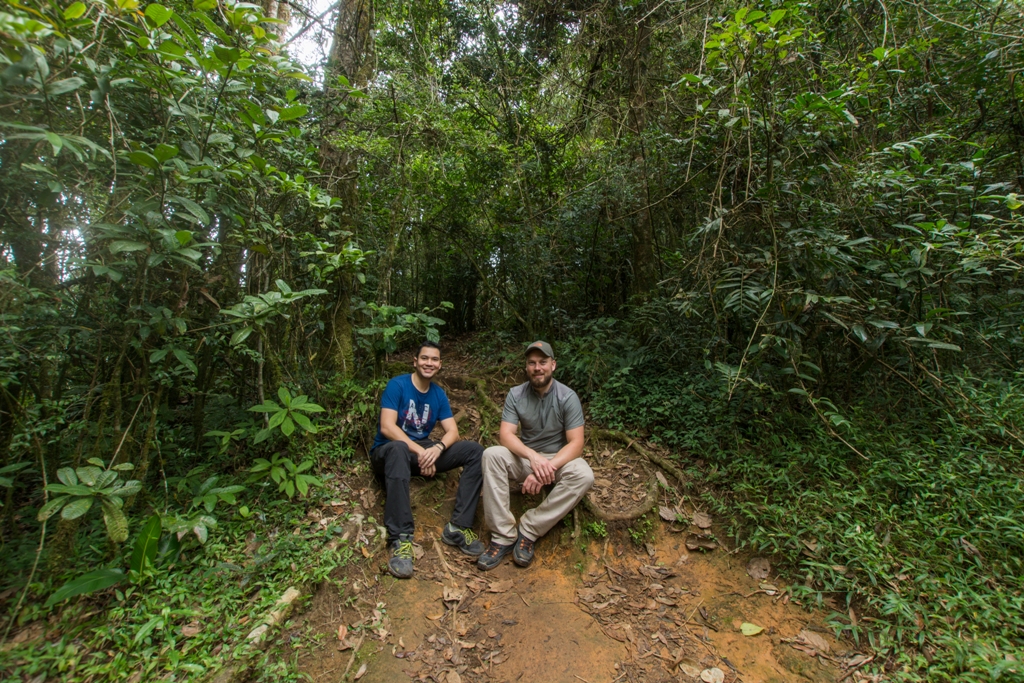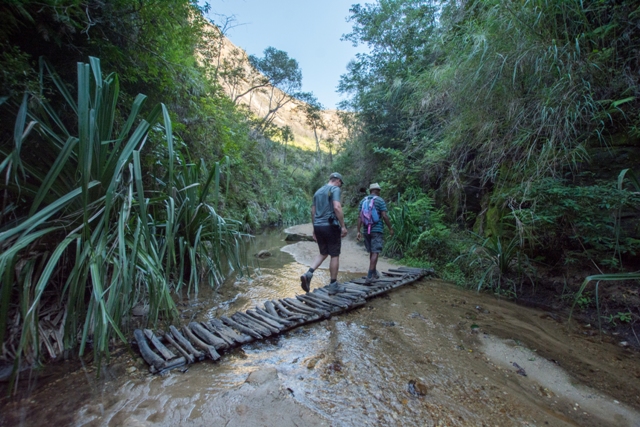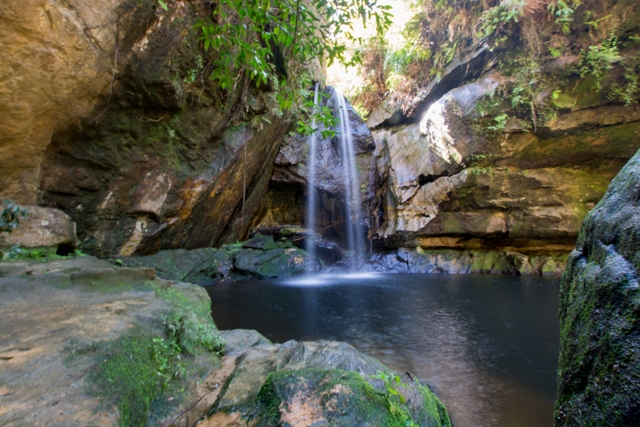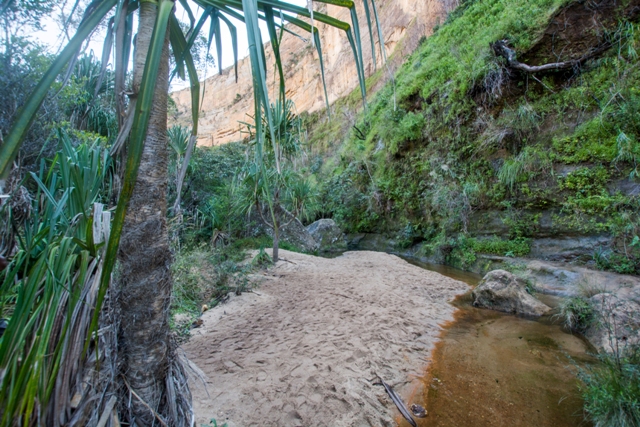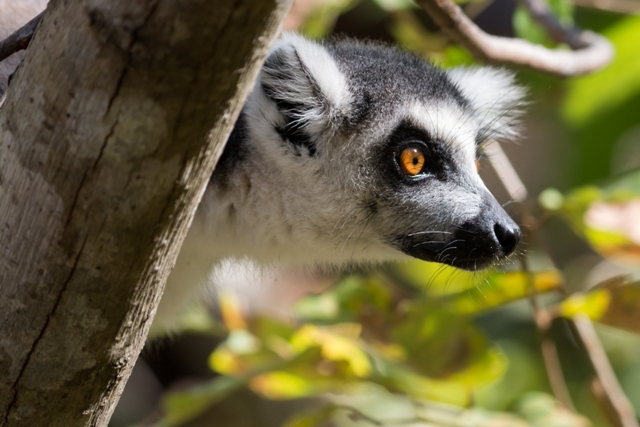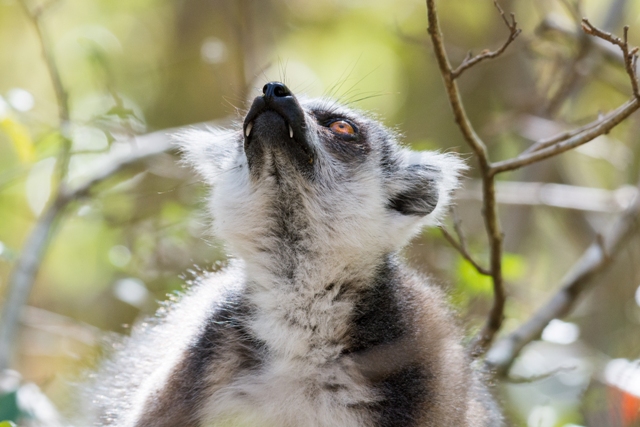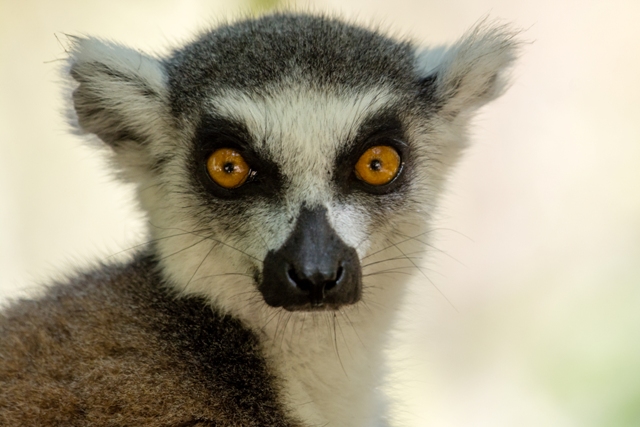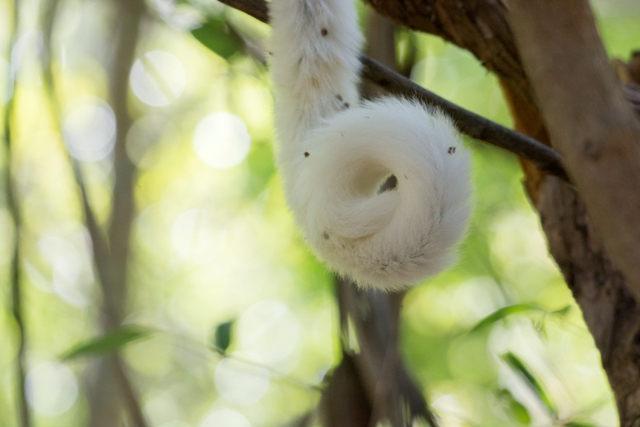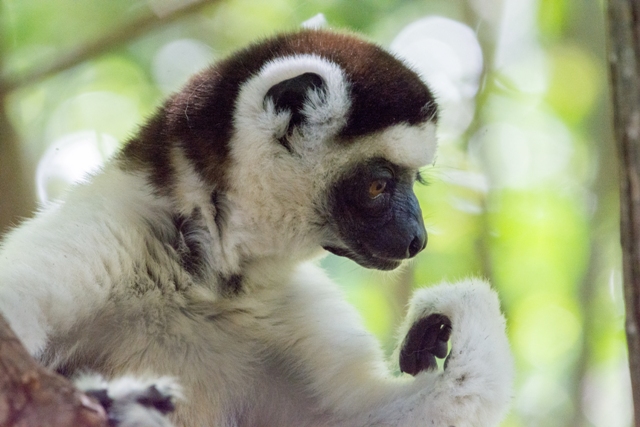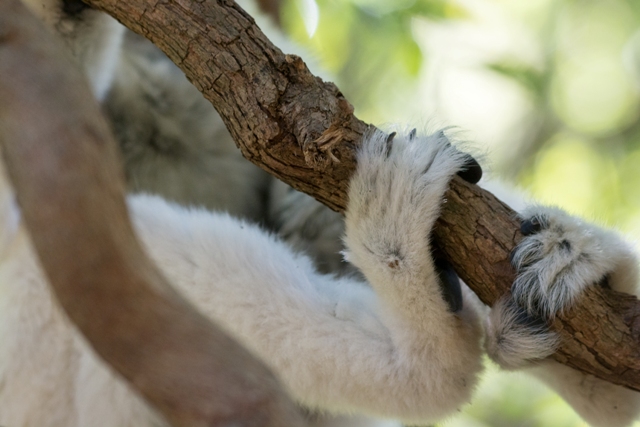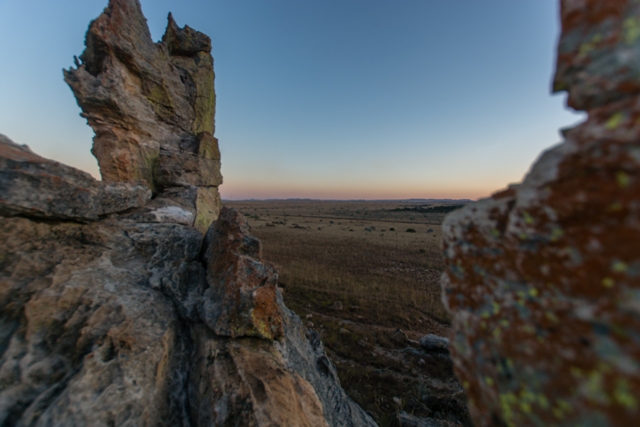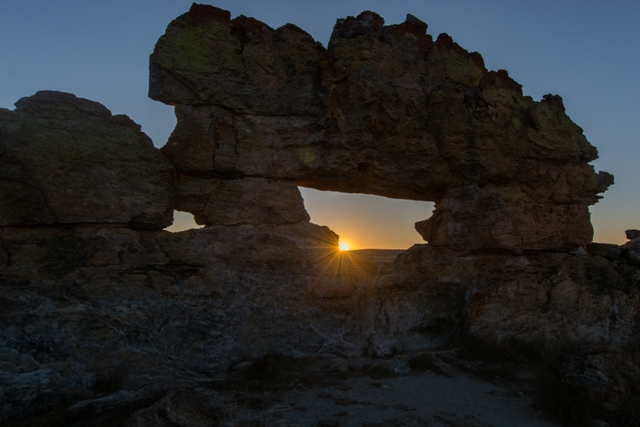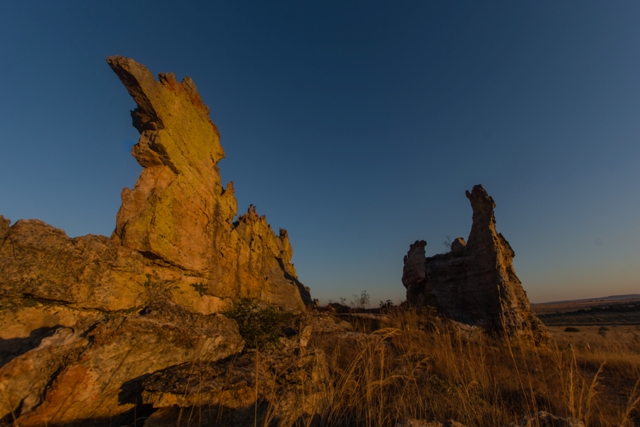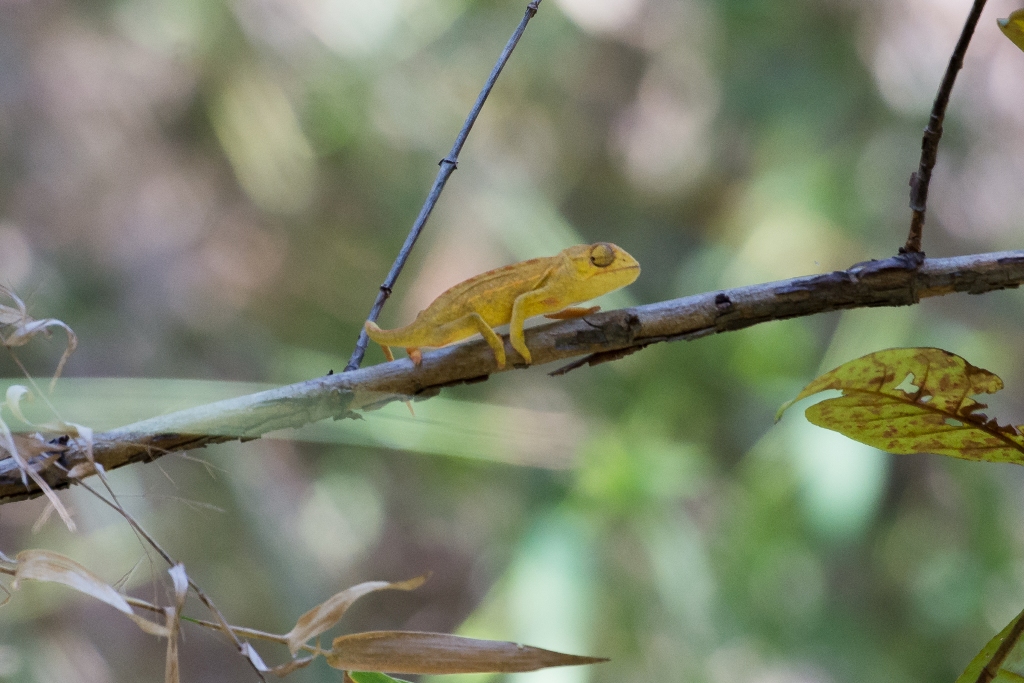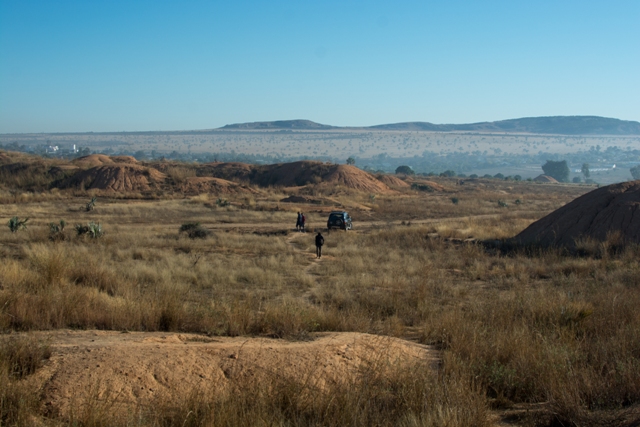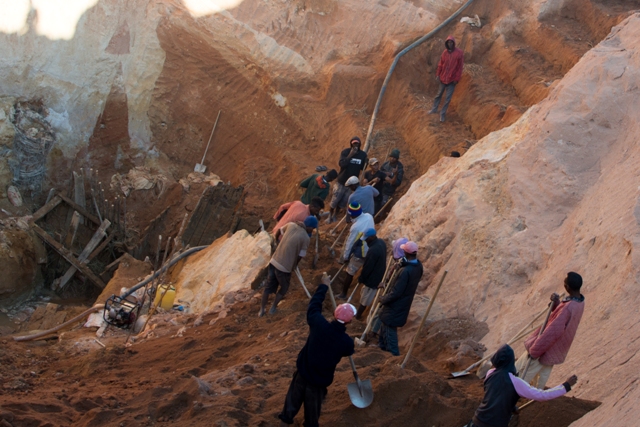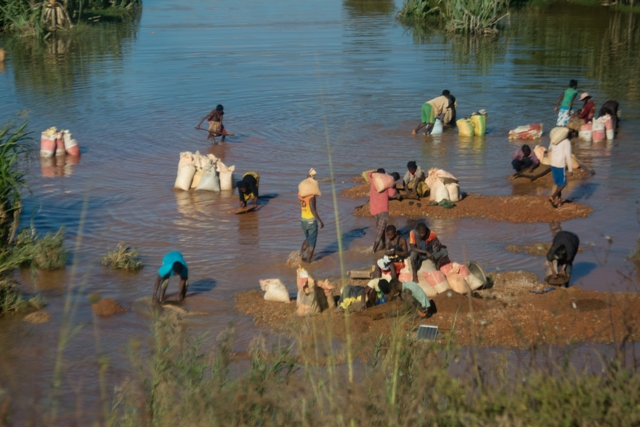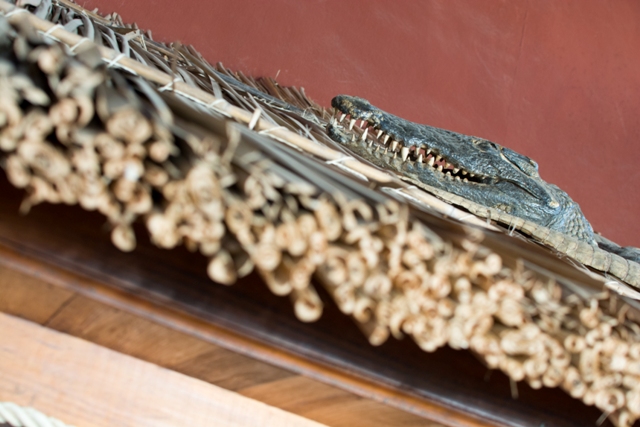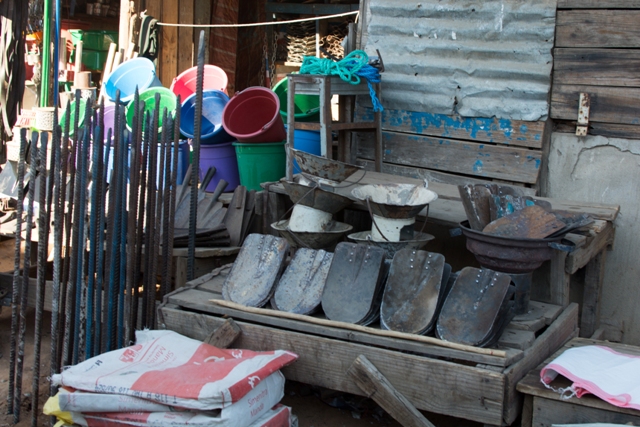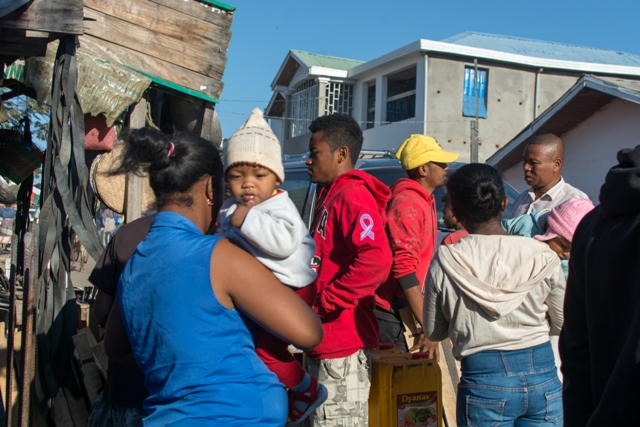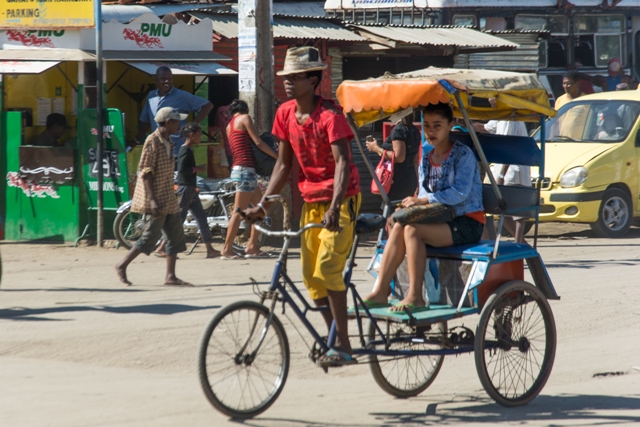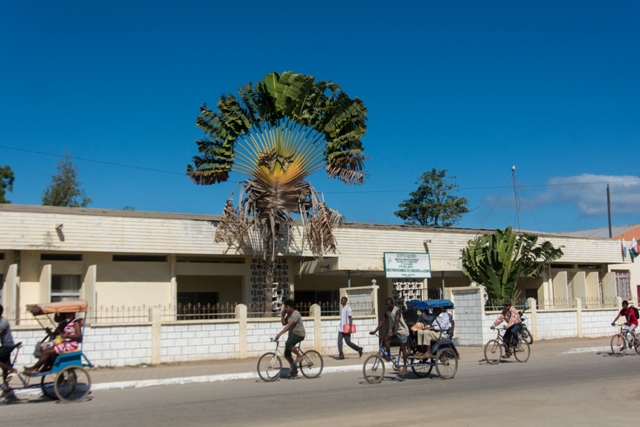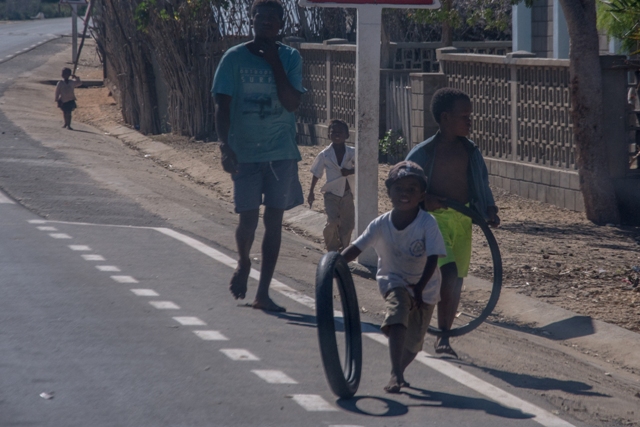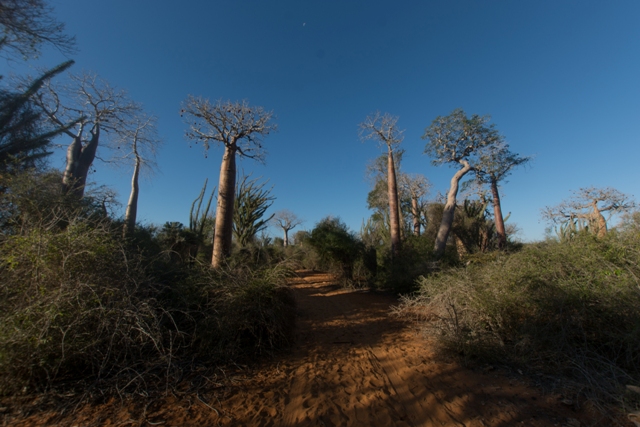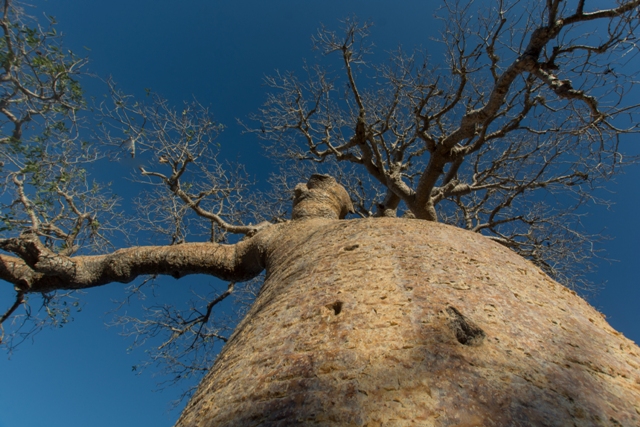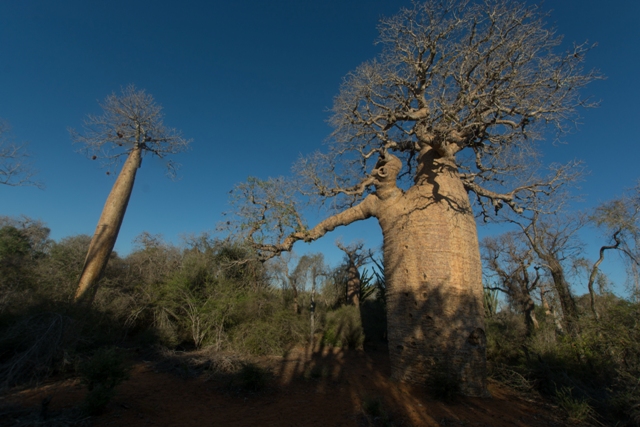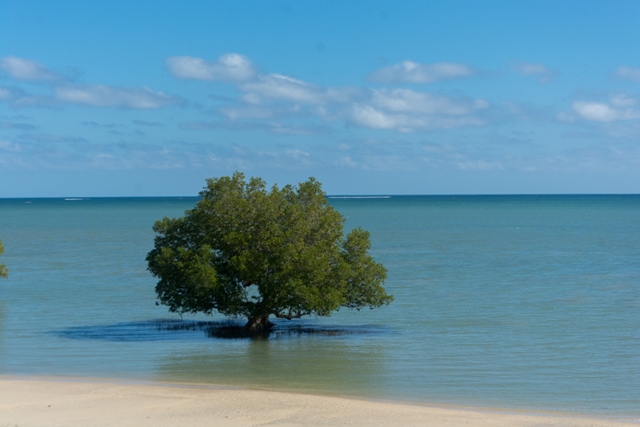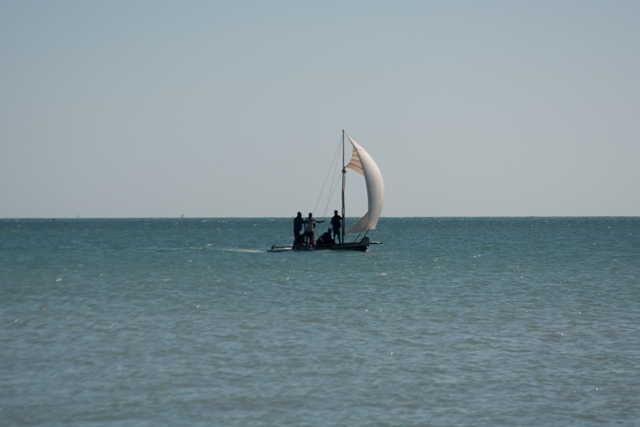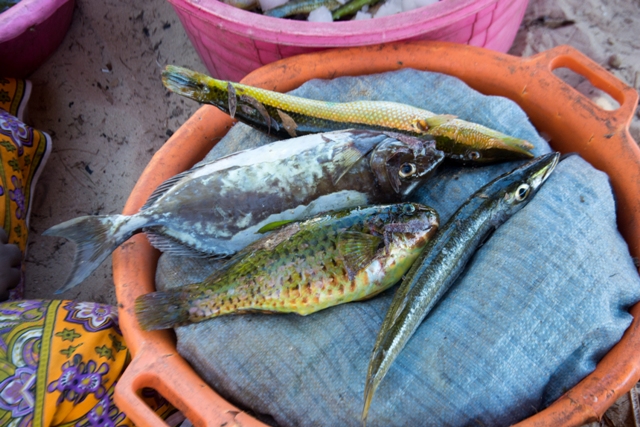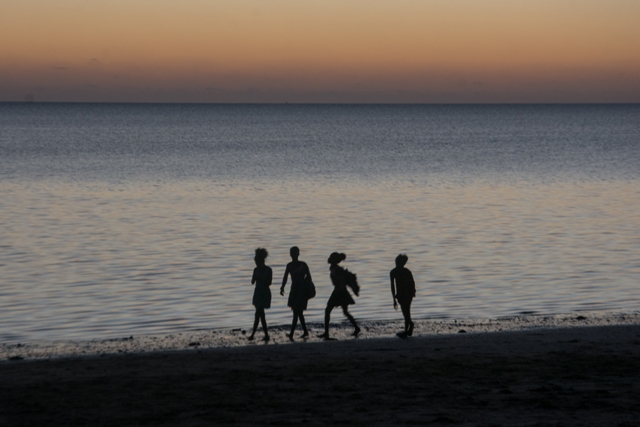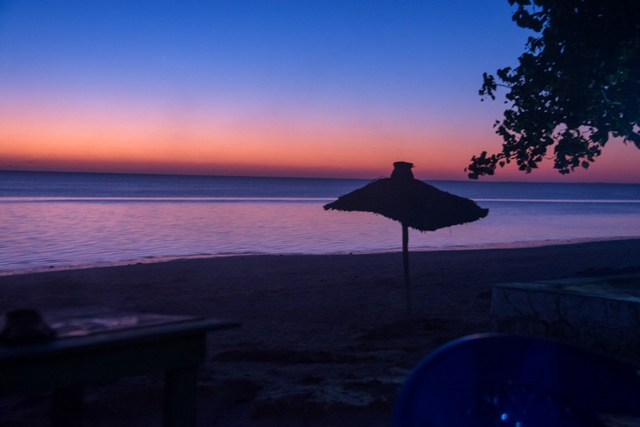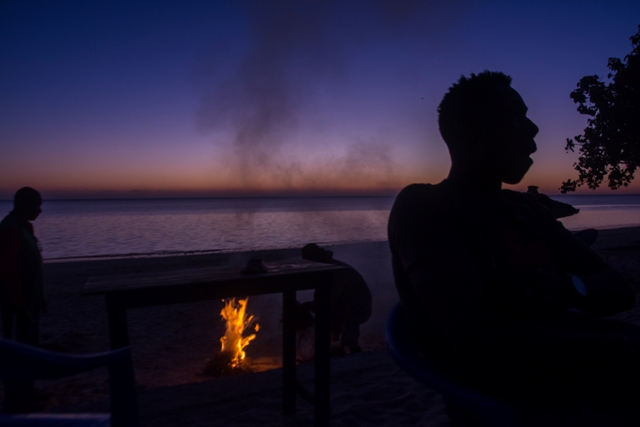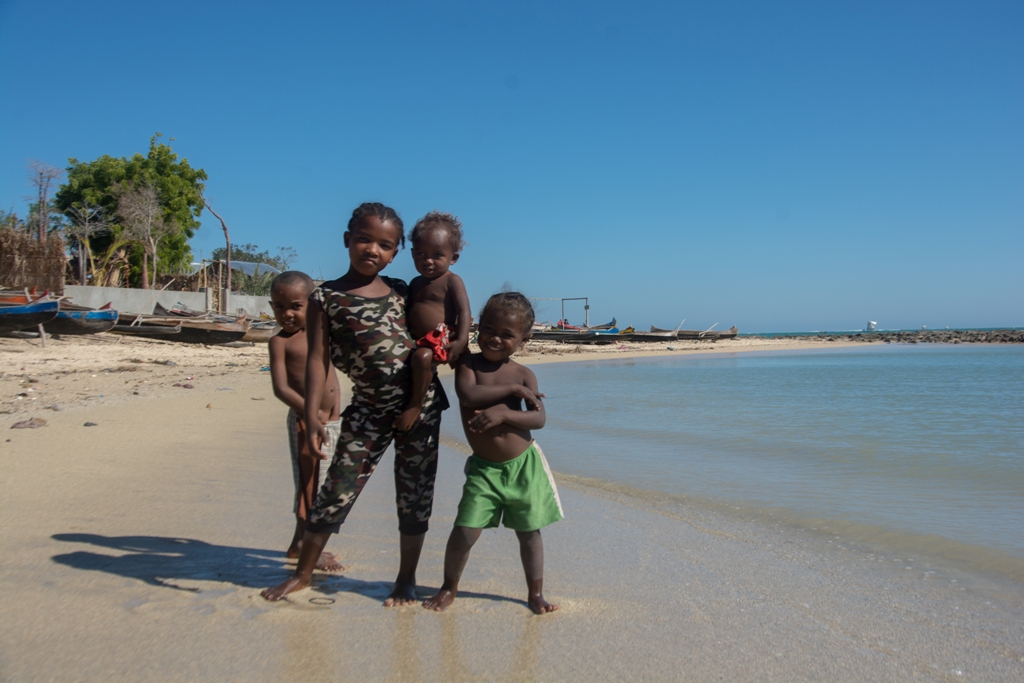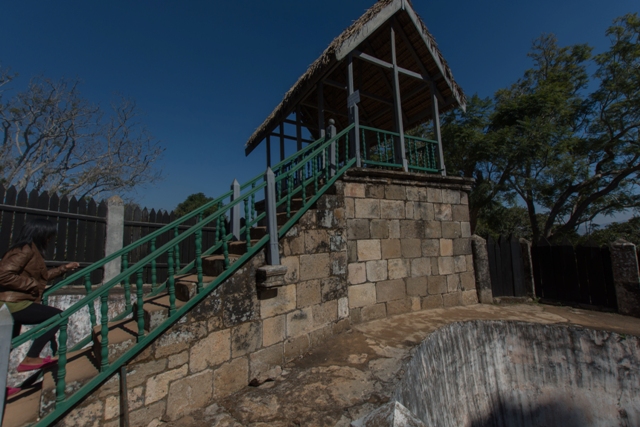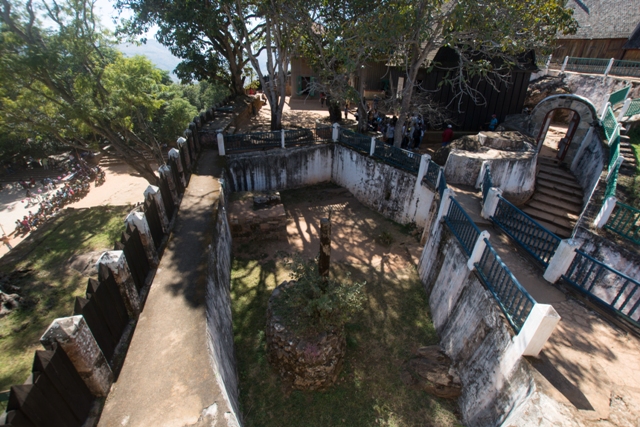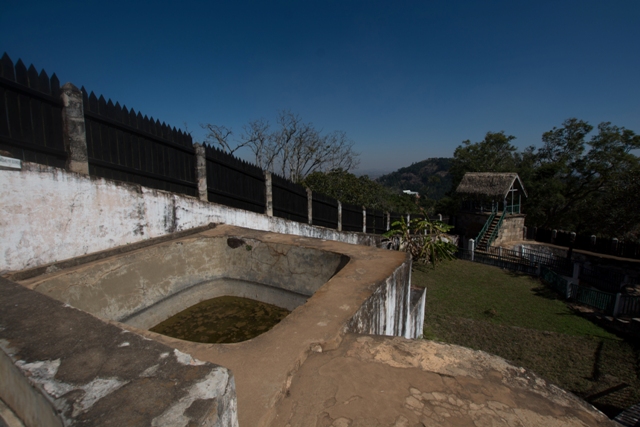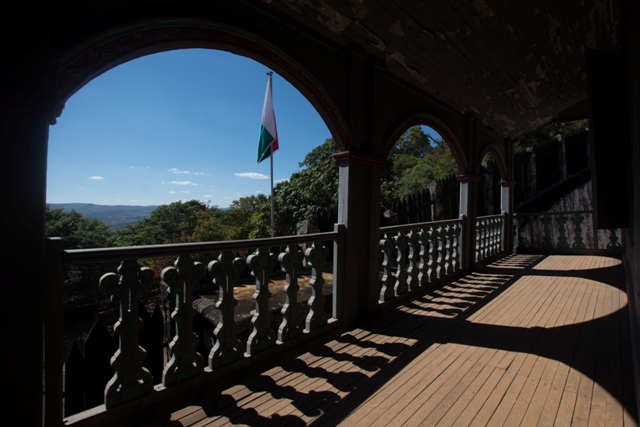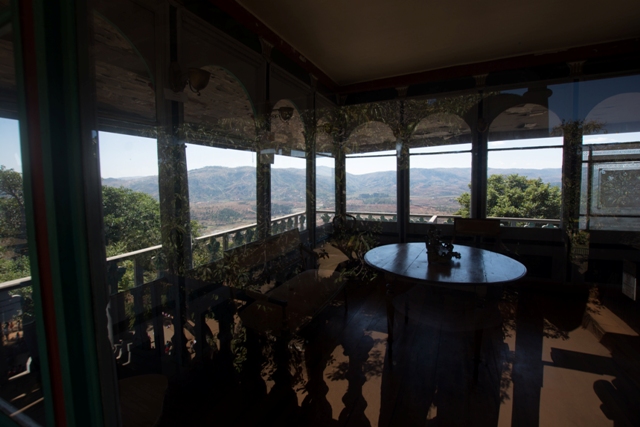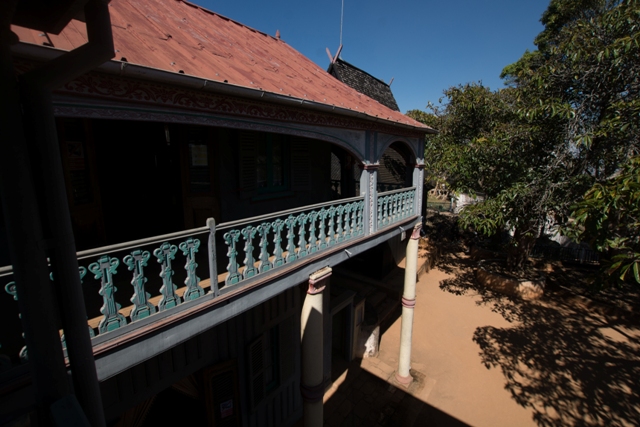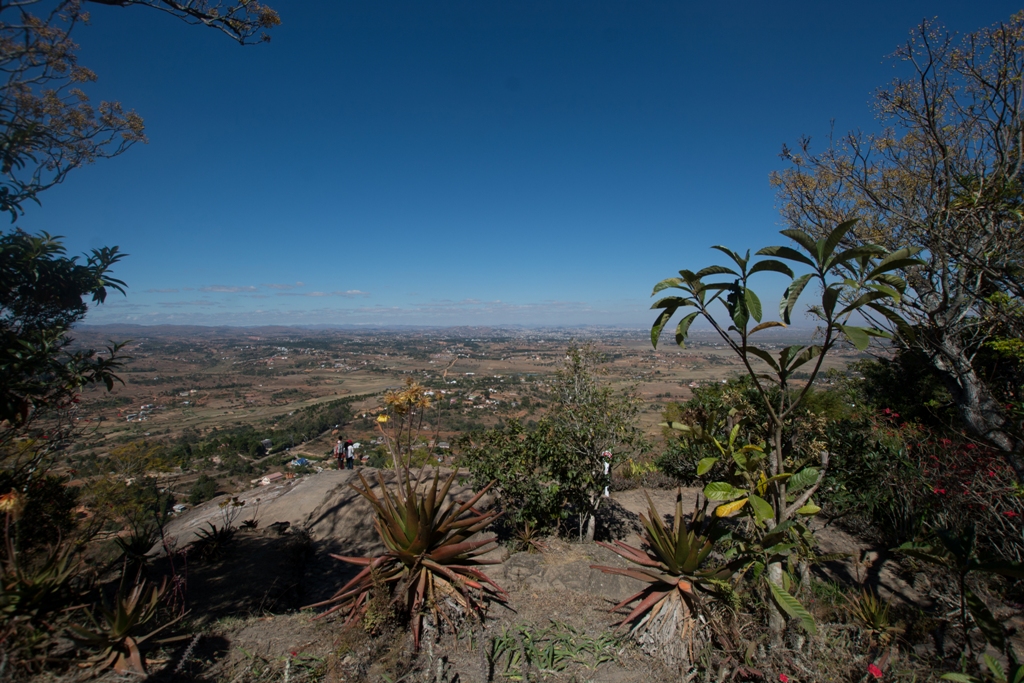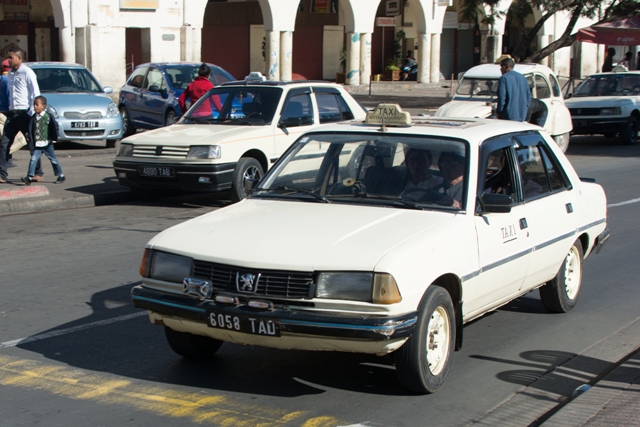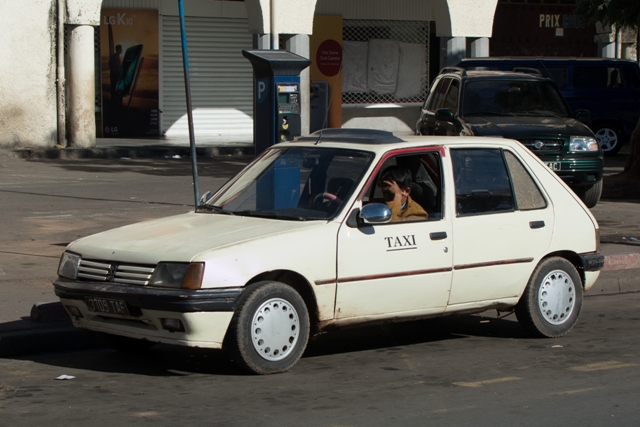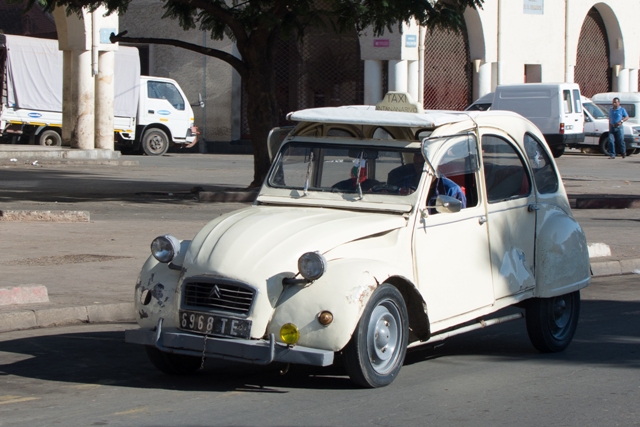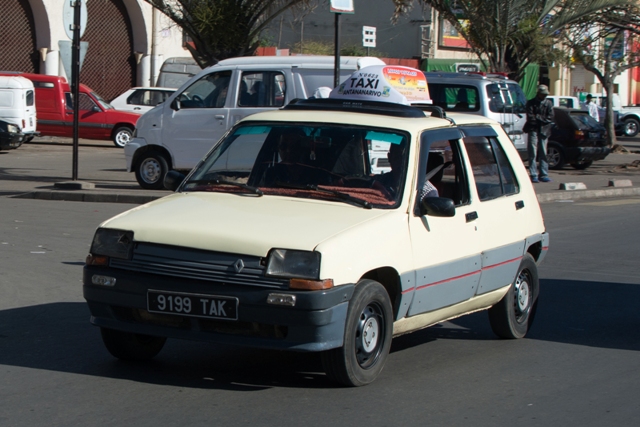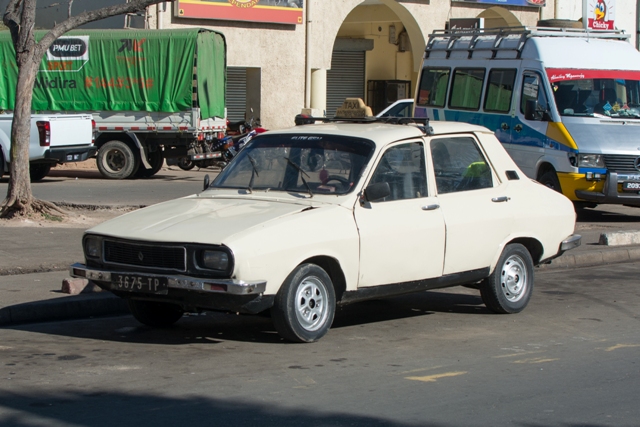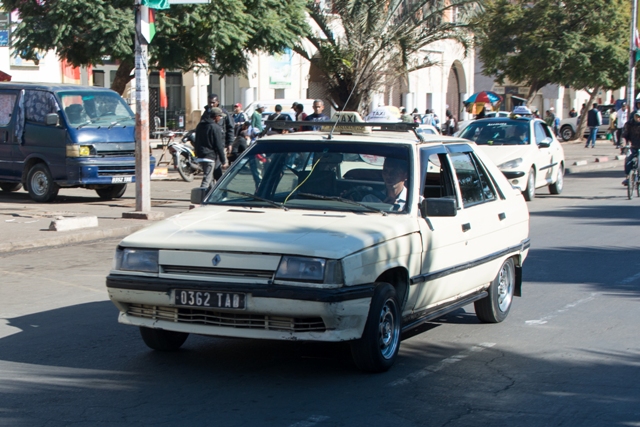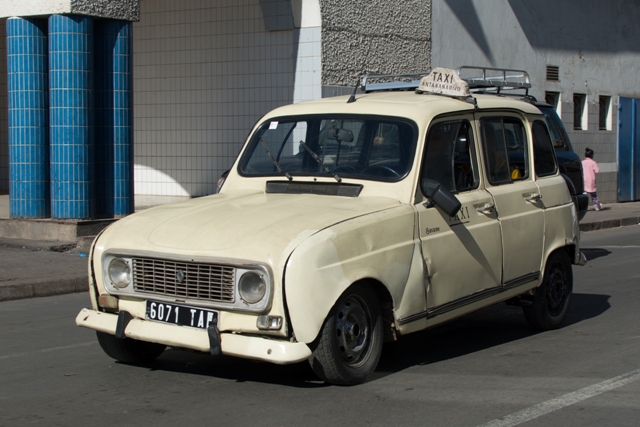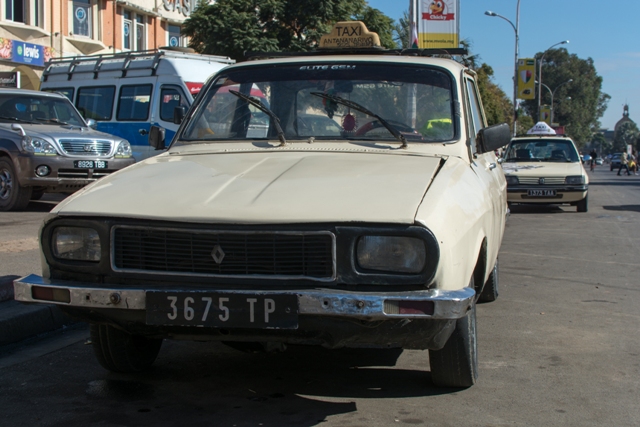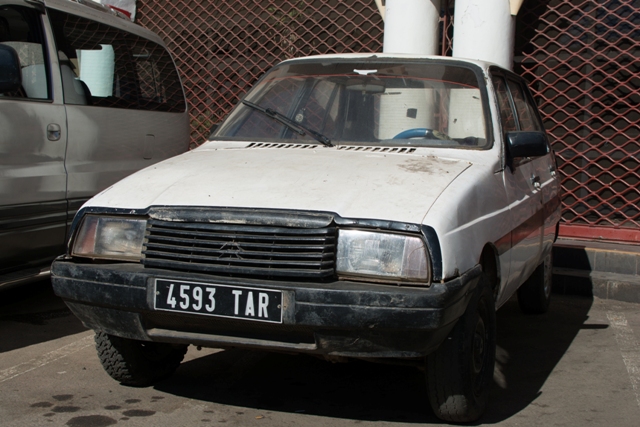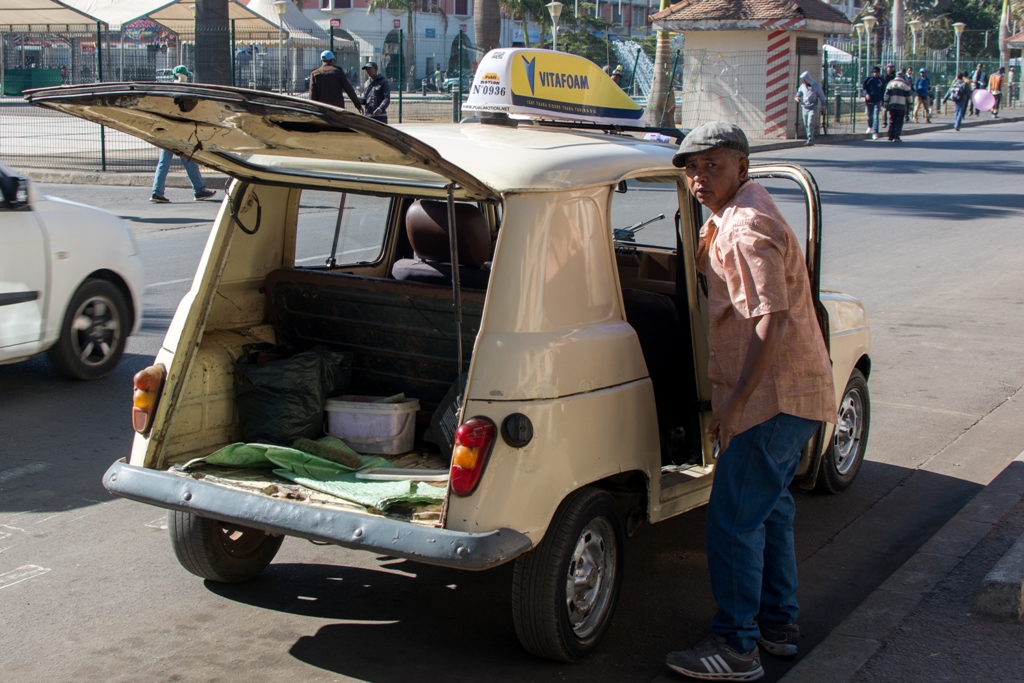Madagascar
Introduction
 Welcome to Madagascar! The world's 2nd largest country-island is located 400km off the coast of East Africa (just across Mozambique) and is home to a unique ecosystem in which endemic species such as energetic limurs, elusive chameleons and discrete fossa thrive. In fact, 90% of Madagascar's wildlife cannot be found anywhere else in the world. Sadly, the ex-French colony is also one of the poorest country in the world, with a GDP per capita lower than $500, Madagascar has suffered from years of bad management, outreagous corruption and international manipulation. Madagascar's natural resources is as diverse as its wildlife, and especially famous for its Vanilla (supplying 80% of the world's consumption!), Cloves and various ores such as Nickel and Cobalt. Its Titanium and timber resources have been the lust of many foreign powers which have contributed to the looting of the country's reserve, to the benefit of a few high ranking officials.
Welcome to Madagascar! The world's 2nd largest country-island is located 400km off the coast of East Africa (just across Mozambique) and is home to a unique ecosystem in which endemic species such as energetic limurs, elusive chameleons and discrete fossa thrive. In fact, 90% of Madagascar's wildlife cannot be found anywhere else in the world. Sadly, the ex-French colony is also one of the poorest country in the world, with a GDP per capita lower than $500, Madagascar has suffered from years of bad management, outreagous corruption and international manipulation. Madagascar's natural resources is as diverse as its wildlife, and especially famous for its Vanilla (supplying 80% of the world's consumption!), Cloves and various ores such as Nickel and Cobalt. Its Titanium and timber resources have been the lust of many foreign powers which have contributed to the looting of the country's reserve, to the benefit of a few high ranking officials.
Our trip (15-26 June 2018) took us from the capital - Antananarivo - to the West coast's little town of Ifaty. The objective was to visit the capital and its' French heritage, visit some of the many national parks to see the country's unique wildlife and scenary and complete the trip by enjoying the Sunset on the East coast while enjoying grilled fish!
Antananarivo
 Antananarivo is the capital city of Madagascar and is located in the high-lands at the center of the country. The city itself is rather cute with crowded colorful houses lodged on valleys overlooking a small lake. The French heritage is clearly marked all over the city with some large boulevards, round-abouts, official buildings, squares and small (rundown) parcs. Most people actually speak French and the local radio blasts French Pop songs from the 90s. This is what makes this city unique: its people! No matter what they think about tourists, Malgache are friendly and colorful people, and strolling in the markets was a truly amazing experience! Despite this, the city is however definitly not very safe because of the terrible poverty. Tourists are recommended not to venture in the city at night, there are no lights and a lot of people are sleeping outside, with nothing much to loose. During the day it is the same, as there aren't many tourists, they immediately become the center of attention and pickpockets have the reputation of being everywhere. The number of churches and their condition is a testament to the very fervant religious beliefs of Malgache people, and rivalry between catholics and protestans are still high.
Antananarivo is the capital city of Madagascar and is located in the high-lands at the center of the country. The city itself is rather cute with crowded colorful houses lodged on valleys overlooking a small lake. The French heritage is clearly marked all over the city with some large boulevards, round-abouts, official buildings, squares and small (rundown) parcs. Most people actually speak French and the local radio blasts French Pop songs from the 90s. This is what makes this city unique: its people! No matter what they think about tourists, Malgache are friendly and colorful people, and strolling in the markets was a truly amazing experience! Despite this, the city is however definitly not very safe because of the terrible poverty. Tourists are recommended not to venture in the city at night, there are no lights and a lot of people are sleeping outside, with nothing much to loose. During the day it is the same, as there aren't many tourists, they immediately become the center of attention and pickpockets have the reputation of being everywhere. The number of churches and their condition is a testament to the very fervant religious beliefs of Malgache people, and rivalry between catholics and protestans are still high.
Ranomafana
 Leaving the city, we took a long drive south to the national parc of Ranomafana, deep in the jungle of Madagascar. On the way south we made pit stops at Antsirabe (2nd largest city of Madagascar), which use to be a relaxing place where affluent malgache people & expatriates would retreat to in order to enjoy the thermal springs and escape from the heat. We also stopped at Ambositra, a small town famous for the wood-carving works. The lush forest of Madagascar have nurtured century-old wood carving techniques which are truly spectacular! We were fortunate to have a very knowledgeable lady-guide who brought us in the heart of the jungle of Ranomafana, to see different species of Lemurs. We often had to literraly run to be able to catch the glimpse of these shy animals, while relying on our guide's eagle eyes to spot incredible reptiles and insects!
Leaving the city, we took a long drive south to the national parc of Ranomafana, deep in the jungle of Madagascar. On the way south we made pit stops at Antsirabe (2nd largest city of Madagascar), which use to be a relaxing place where affluent malgache people & expatriates would retreat to in order to enjoy the thermal springs and escape from the heat. We also stopped at Ambositra, a small town famous for the wood-carving works. The lush forest of Madagascar have nurtured century-old wood carving techniques which are truly spectacular! We were fortunate to have a very knowledgeable lady-guide who brought us in the heart of the jungle of Ranomafana, to see different species of Lemurs. We often had to literraly run to be able to catch the glimpse of these shy animals, while relying on our guide's eagle eyes to spot incredible reptiles and insects!
Isalo
 We then made our way towards another national parc, this time with a radically different landscape. Isalo is an amazing parc nested within some deep gorges and canyons. The location is home to local tribes of Baras who traditionally lived from large herds of Zebus. Our guide was truly fantastic as well, very keen on sharing his knowledge of this very spectacular place and its inhabitants. The trek started in the lowlands and was quickly followed by a climb up and over the ridges to oversee the entire canyon. This bare (and burning) rocky land is home to scorpions, snakes and amazing vegetation capable to grow on the rocks. From the top of the canyon we could see falcons diving into the lush green mass below and emerging back up again against a perfectly blue sky. Trekking down into the Canyon was truly spectacular and as we entered the unique eco-system of the Canyon and its small river streaking through the rocks and over small beach-like patches of sand, we truly felt like entering a lost and preserved world! We trekked along the small river all the way to what seemed like the heart of the Canyon: a beautiful waterfall. The canyon is so high that the vegetation and the water only sees the sun for a few hours per day, when the sun is exactly on top of it. As such we didn't swimm too long; the water was freezing desipte the heat! It was in the canyon that our guide found a tiny chameleon across from us, hiding in the trees! After the trek, our driver raced against the sun to bring us the the Window of Isalo, a beautiful sight to watch the sunset over the barren landscape. As soon as the dust settled from our mad drive, we enjoyed a truly unique spectable, ending a beautiful day in style!
We then made our way towards another national parc, this time with a radically different landscape. Isalo is an amazing parc nested within some deep gorges and canyons. The location is home to local tribes of Baras who traditionally lived from large herds of Zebus. Our guide was truly fantastic as well, very keen on sharing his knowledge of this very spectacular place and its inhabitants. The trek started in the lowlands and was quickly followed by a climb up and over the ridges to oversee the entire canyon. This bare (and burning) rocky land is home to scorpions, snakes and amazing vegetation capable to grow on the rocks. From the top of the canyon we could see falcons diving into the lush green mass below and emerging back up again against a perfectly blue sky. Trekking down into the Canyon was truly spectacular and as we entered the unique eco-system of the Canyon and its small river streaking through the rocks and over small beach-like patches of sand, we truly felt like entering a lost and preserved world! We trekked along the small river all the way to what seemed like the heart of the Canyon: a beautiful waterfall. The canyon is so high that the vegetation and the water only sees the sun for a few hours per day, when the sun is exactly on top of it. As such we didn't swimm too long; the water was freezing desipte the heat! It was in the canyon that our guide found a tiny chameleon across from us, hiding in the trees! After the trek, our driver raced against the sun to bring us the the Window of Isalo, a beautiful sight to watch the sunset over the barren landscape. As soon as the dust settled from our mad drive, we enjoyed a truly unique spectable, ending a beautiful day in style!
Zebu Thieves and Precious Stone Mines
While evoking the Baka tribe, our guide also told us that the "voleurs de Zebus" (literaly Zebu thieves) was still a massive problem in Madagascar. Altough it seemed a bit unreal to us at first, some basic research did confirm that these people, often identified as coming from the African continent (Mozambique & Tanzania), were a real contemporary problem with thousands of victims every year as they often use violence to steal the animals to supply a growing black market which is encouraged by illegal exports endorsed by corrupt officials
Beyond Zebu thieves, poverty is also drawing alot of people in the region of Isalo where semi-precious stones are being painfully extracted from "licensed" parcels of land, where again, corrupt owners of the land impose huge fees on workers coming from all over the country to dig for luck. A lot of these licenses are owned by officials or foreign companies who are not too bothered about the working conditions. As such, these mining towns are as close to the "Far-West" as you can get. Anyone can just come in town, buy a shovel and some equipment, pay for his permit to one of the many stations and work for his luck. Being tourists, we were brought to one of the few main jewlery shops where some opulent salesmen show what they have in stock: mostly rejected stones deemed unfit for export.
Ifaty
 We finally managed to reach Ifaty, after what has been quite a drive! The final stretch was a long, straight and downards road leading us directly to the sea! What a contrast after the high-lands, the jungle and the Canyon. In the space of a few days, we felt like having crossed continents! Ifaty is a small town by the sea which use to be quite developped but is now quite rundown. Do not expect nice hotels there, or be sure to be there in the few months considered as being the "high-season". The few hotels are not in a fantastic shape, there was hardly any running water and the beautiful gardens were somewhat spoilt by the ferocious mosquitoes! From the beach, we met some nice guys who brought us to the Baobab forest by carriage pulled by energetic Zebus. Baobabs there are spectacular. The next day, we took to the sea on a narrow pirogue, literally riding the wind on the small raft expertly navigated by our captain!
We finally managed to reach Ifaty, after what has been quite a drive! The final stretch was a long, straight and downards road leading us directly to the sea! What a contrast after the high-lands, the jungle and the Canyon. In the space of a few days, we felt like having crossed continents! Ifaty is a small town by the sea which use to be quite developped but is now quite rundown. Do not expect nice hotels there, or be sure to be there in the few months considered as being the "high-season". The few hotels are not in a fantastic shape, there was hardly any running water and the beautiful gardens were somewhat spoilt by the ferocious mosquitoes! From the beach, we met some nice guys who brought us to the Baobab forest by carriage pulled by energetic Zebus. Baobabs there are spectacular. The next day, we took to the sea on a narrow pirogue, literally riding the wind on the small raft expertly navigated by our captain!
Ambohimanga
 This UNESCO site is located only a few kilometers away from the capital however the narrow road crosses many small villages, particularily jammed-up during market hours. The Royal Hill of Ambohimanga is an old royal city and has had a very important role in popular beliefs. This old palace overlooking the land was completly revamped for ferocious and bloodthirsty Queen Ranavalona by the Frenchman Jean Laborde in the early 19th century. To me, visiting this place is a must to understand the amazing history of Madagascar and, to a certain extent, understand the country's current situation. What made Queen Ranavalona especially epic was her somewhat crazy cruelty. After her Husband died (Radanma I, son of victorious Andrianampoinimerina who vinquished Antananarivo) she was known to surround herself with virgin servants and regularily have men she fancied brought to her royal chambers, afterwhich she would get them thrown to their death from the high cliff where her palace resided to ensure no one could ever reveal having had an affaire with her royal self. This terrible fate was true to many except for a few, amongst them Jean Laborde, a frenchman she eventually allowed to her court and to whom she gave many projects for the country (fabrication of weapons, industrialisation, farming, strategy, negociation with foreign powers, schools etc). This is why I actually recommend this brilliant book by Pierre Sogno which documents this fascinating period of Madagascar History, a must read!
This UNESCO site is located only a few kilometers away from the capital however the narrow road crosses many small villages, particularily jammed-up during market hours. The Royal Hill of Ambohimanga is an old royal city and has had a very important role in popular beliefs. This old palace overlooking the land was completly revamped for ferocious and bloodthirsty Queen Ranavalona by the Frenchman Jean Laborde in the early 19th century. To me, visiting this place is a must to understand the amazing history of Madagascar and, to a certain extent, understand the country's current situation. What made Queen Ranavalona especially epic was her somewhat crazy cruelty. After her Husband died (Radanma I, son of victorious Andrianampoinimerina who vinquished Antananarivo) she was known to surround herself with virgin servants and regularily have men she fancied brought to her royal chambers, afterwhich she would get them thrown to their death from the high cliff where her palace resided to ensure no one could ever reveal having had an affaire with her royal self. This terrible fate was true to many except for a few, amongst them Jean Laborde, a frenchman she eventually allowed to her court and to whom she gave many projects for the country (fabrication of weapons, industrialisation, farming, strategy, negociation with foreign powers, schools etc). This is why I actually recommend this brilliant book by Pierre Sogno which documents this fascinating period of Madagascar History, a must read!
Journey to the past
 I thought that this page would not be complete without paying tribute to the Taxis of Antanarivo which brought us 20 years back! Renault 4L, Renault 5, Citroen CX2, 2 Chevaux, this is a tribute to great cars and dedicated drivers that are still able to get them moving on the slopy roads of the capital! Riding them is like a journey back in time: deep and low sofa-like seats, thin steering wheels, window cranks (that needs a bit of assistance) and the distinctive vibrations and occasional breakdowns! We took pleasure in carefully selecting our rides to enjoy the unique experience!
I thought that this page would not be complete without paying tribute to the Taxis of Antanarivo which brought us 20 years back! Renault 4L, Renault 5, Citroen CX2, 2 Chevaux, this is a tribute to great cars and dedicated drivers that are still able to get them moving on the slopy roads of the capital! Riding them is like a journey back in time: deep and low sofa-like seats, thin steering wheels, window cranks (that needs a bit of assistance) and the distinctive vibrations and occasional breakdowns! We took pleasure in carefully selecting our rides to enjoy the unique experience!
- Our Itinerary -

